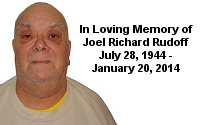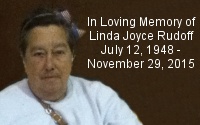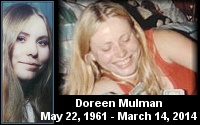| « Ghostbusters Books - Making Ghostbusters Trivia & Image Captions | Ghostbusters Books - 1001 Movies You Must See Before You Die » |
by Don Shay
(from Making Ghostbusters)
(transcribed by Mark Brown)
It was an inspired concept.
Take three of the funniest men working in film today, turn them loose on an all-powerful supernatural entity hell-bent on bringing New York to its knees, add generous doses of the best special effects money can buy and then put the whole package in the hands of a gifted director with a proven track record for blockbuster comedy. The result -- a megahit of the first order ... Ghostbusters.
But for Dan Aykroyd -- originator of the concept -- Ghostbusters was not entirely a laughing matter. A card-carrying member of the American Society for Psychical Research, Aykroyd had for years been interested in psychic disturbances and paranormal activity. His fascination, in fact, was firmly rooted -- dating back to childhood recollections of growing up in an old farmhouse in Canada, where family seances and unexplained phenomena were all but common occurrences.
"That farmhouse has been in the family for five generations," Aykroyd recalled, "and I've come to believe that any place that has that much history is bound to have some degree of spiritual activity -- so many people came through there and lived there and died there. My only personal experience was when a friend and I were sitting in the house one evening watching television and we heard knocking coming from upstairs. We went to the stairs and looked up and saw these ectoplasmic tubes of light -- shimmering patterns of iridescent green light that passed in front of us. We were both so scared, we ran out of the house. But there were lots of family stories. My grandparents, apparently, were into holding seances, and my father would tell of being invited to participate as a medium and being put into trances. During one such seance, a trumpet reportedly flew around the room, talking and singing, until someone outside the circle walked in and it fell to the ground. My mother claims to have witnessed an apparition when she was nursing me. A couple appeared to her at the end of her bed in the old family farmhouse, and it shook her so much she was afraid to talk about it. But a couple of weeks later she finally mentioned it. Some other member of the family dug out an old family album and there, in one of the pictures, was the couple -- they turned out to be ancestors. On another occasion, my grandmother on the other side of the family -- who was a real practical, no-nonsense business woman -- came to visit, and had the covers lifted off of her while she was sleeping. She was then thrown out of bed and bitten on the legs, ankles and arms by some kind of turbulent force -- she even developed a rash."
With this type of family mythology imbedded in his psyche, it was perhaps inevitable that Dan Aykroyd should, at some point in his creative life, turn to the spiritual world for comedic inspiration. There were, however, other influences. "Ghostbusters, I think, has its basic roots in American humor and American film. Abbott and Costello, the Bowery Boys, Dean Martin and Jerry Lewis, Bob Hope -- everyone did a ghost picture. I thought it would be great to write one for this decade, updating the form by using the concepts of science and technology and by employing the kinds of special effects skills available today. In parapsychology, a lot of researchers and thinkers have developed a link between quantum theory and paranormal activity -- there are even several books on the subject -- but parapsychologists have long been plagued by the fact that only one person in ten ever reports a paranormal experience. I thought: 'What if you advertised on TV or in the Yellow Pages and said: "Hey, we believe you, we understand you."' I thought it would help. That was the birth of the commercial enterprise of ghostbusting."
Armed with a multimillion-dollar premise, Aykroyd set to work on his first draft script -- an inventive blend of fantasy and high technology, with a pair of lead roles tailored specifically for himself and long-time friend and associate John Belushi. "My first draft was written in a way that your basic acceleration physicist might have enjoyed more than the mass audience," Aykroyd confessed. "I used a lot of technical words and phrases. Also, my original story was more eerie in tone, and it started right off with the crew busting ghosts. The first frame was the garage door opening up at the firehall, the Ectomobile roaring out into the night and the guys going on a bust." Other films and other projects interrupted the screenwriting process, and John Belushi's sudden death put a further temporary hold on the work. "I'd been working on it, on and off, for a couple of years -- always with the idea of having John involved. I was, in fact, writing one of his lines when I heard that he had died. It was a terrible blow, but eventually I came to realize that the picture really served any three guys."
Aykroyd presented his half-completed script to Bill Murray -- a fellow Saturday Night Live expatriot and alumnus of the Chicago-based Second City troupe. When Murray responded favorably to the concept, Aykroyd took it to Ivan Reitman, with whom he had worked briefly -- years before in Toronto -- as a comedian and announcer for a live television variety show. Reitman -- having subsequently produced the phenomenally successful National Lampoon's Animal House and directed Bill Murray in Meatballs and Stripes -- was one of the few filmmakers in Hollywood whose comedy credentials were both well-honed and thoroughly bankable.
"Dan had written only forty or fifty pages at that point," Reitman recalled, "and frankly, I had no idea how I would go about making it into a film. For one thing, it was set in the future -- not far in the future, but far enough -- and it took place on a number of different planets or dimensional planes. And it was all action. There was very little character work in it. The Ghostbusters were catching ghosts on the very first page -- and doing it on every single page after that, without respite -- just one sort of supernatural phenomenon after another. By the tenth page, I was exhausted. By the fortieth or fiftieth page -- however many there were -- I was counting the budget in hundreds of millions of dollars. And there really weren't very many laughs. Although I could detect a comic attitude, the whole thing was written rather seriously. In the end, I just kind of set it aside and forgot about it."
Dan Aykroyd, however, did not. When the script was finished some months later, he submitted it to Reitman once again -- complete with conceptual illustrations and a quickie videotape, of himself in a jumpsuit-based uniform embellished with makeshift nutrona wands and a proton pack fashioned from styrofoam and old radio parts. With several projects stalled in various stages of development, Reitman -- champing at the bit to get a film into production -- decided to give Ghostbusters a closer look.
"What I focused on, as I read the script again, was Dan's really brilliant initial concept -- the idea of a group of men who work out of an old firehall and respond to emergencies much the way firemen do. The only difference is that these emergencies are supernatural in nature -- and so what the Ghostbusters do is go out, trap ghosts and incarcerate them. Dan had come up with that concept, and had worked out the equipment and the car and all that sort of thing. He even thought of the basic idea for the Ghostbusters logo -- the little ghost inside a stop sign. That was one of the few things in the original draft that I had actually laughed at. But it seemed to me that the overall concept was diluted by setting the story in the future and then introducing fantasy elements and going off into other dimensions. So I called Dan and we had lunch at Art's Delicatessen and I told him what I thought ought to be done."
Reitman's suggestions were firmly rooted in his own philosophy of humor. "My comedy has a very strong basis in reality -- which is not to say that that's the only kind of comedy worth doing. There are lots of very funny people who do comedy that has nothing whatsoever to do with reality-the kind of comedy that comes from a more cartoon-like approach, with very broadly drawn characters who do things in a very exaggerated manner. Generally, I will have a couple of characters in my films that are like that, mainly as leavening. But for the most part, the principals are very real guys who say funny things and are in funny situations. And they respond to those situations the way you or I would if we were anywhere near that witty. So with that as a basic approach, I told Dan that I felt we should set the film in a modern American city and that we should tell how ghostbusting came about -- how the guys invented their equipment and the story of their first really big bust."
Without hesitation, Dan Aykroyd expressed his agreement with the direction Ivan Reitman felt the screenplay should be taken. Reitman next suggested a writing collaboration between Aykroyd and Harold Ramis -- an extremely gifted comedy writer who had worked on the scripts for all three of Reitman's previous hits. Another Second City veteran, and former head writer and performer on SCTV, Ramis had just completed postproduction on his second directorial effort, National Lampoon's Vacation. "Right after our lunch meeting," said Aykroyd, "Ivan and I walked over to Harold's office -- which, like Ivan's, was on The Burbank Studios lot. At the time, Harold happened to be reading another script I'd written about the Canadian Mounted Police. I told him to put that script aside, and I replaced it with the Ghostbusters one. After looking through the script and listening to what we had to say for about twenty minutes, he said, 'Okay, I'm in."' Not only was Ramis to cowrite the script, but he was also to become the third Ghostbuster -- a choice reunion with Bill Murray after their successful pairing in Stripes.
Later that same afternoon, Reitman called his agent, Mike Ovitz -- who also happened to represent Aykroyd, Ramis and Murray -- and asked him to set up a meeting with Columbia Pictures chairman Frank Price. "There was really nothing for him to read. I didn't want to give him Danny's script because it wasn't really relevant to where we were going, and it probably would have scared him. I just told him who was going to be involved and gave him a five-minute synopsis of the story -- the way it was going to go -- and he said, 'Well, what's it going to cost?' I said I had no idea -- there was no screenplay and no budget -- but that it was going to be expensive. And he said, 'Keep it in the mid-twenties and you've got yourself a deal."' The $25 million commitment had only one hitch -- but a big one. Columbia needed a major release for the summer of 1984. Reitman and his team had exactly one year to come up with a script, mount the production and complete the extensive and time-consuming visual effects -- and his team at that point, aside from his writers, consisted solely of associate producers Joe Medjuck and Michael Gross.
The script, of course, became an immediate and preeminent priority. Sequestered in Ivan Reitman's suite of offices, Dan Aykroyd and Harold Ramis set to work restructuring and rewriting, yet retaining the essential germ of the original Ghostbusters concept. "What I loved about Dan's first script," said Ramis, "was that he had taken things which had always been very chilling to me and made them seem perfectly mundane. The fact that the Ghostbusters encountered all these supernatural phenomena with total casualness demystified a lot of it. But the original Ghostbusters were essentially $10,000-a-year janitors who worked for someone else and really had no technical expertise whatsoever. I thought that was a problem. For me, comedy always seems more dynamic when characters choose to do what they are doing, rather than being victims of circumstance. So we decided that the overall motivation would be much stronger if the Ghostbusters initiated the business themselves and were therefore captains of their own destiny."
Characterization also needed to be stronger. "In Dan's draft, you could not differentiate the characters," Ramis continued. "Stantz and Venkman and Ramsey -- the character we changed to Winston -- were all essentially the same. That was fairly representative of Dan's writing at the time. He was very much concerned with story and structure and effects, but he would sort of stay on the surface of his characters. So one of the first things we did -- together with Ivan -- was work out distinctive character traits for the Ghostbusters so that each would have his own internal motivation and personal style. In essence, that translated into one character being hipper and more verbal than the others -- more of a huckster, the salesman of the team -- someone who is weak on the technical side and probably didn't do all that well in school, but is smart enough to have hooked up with guys more intelligent than he is. That, of course, was Bill's character. Then it's always useful to have a mechanic -- a nuts and bolts person -- honest, straight-ahead, enthusiastic. And that really worked for Dan. For my character, we went for a human computer -- someone who has no emotional life whatsoever, who only deals in facts and information -- a 'New Wave' Mr. Spock. For actors, especially in group comedy, those kinds of archetypes always seem to work."
Once the characters had been addressed, each section of the script was carefully scrutinized. One of the first things to go was the entire finale of Aykroyd's original draft -- an involved series of events which culminated with the three Ghostbusters being whisked into alternate dimensions. "In a sense, it seemed almost like two different movies," Ramis explained. "And while I think most people can accept the notion of the supernatural as being one thing, interdimensional travel to them is sort of a shadow area that relates more to outer space. It just seemed too big a leap for the audience to make." Aykroyd's ghostbusting technology was kept essentially intact, while other elements -- such as the gluttonous vapor ghost and the Stay-Puft marshmallow man -- were retained, but with a shift in location or emphasis.
Since the film was to tell how the Ghostbusters became Ghostbusters, a back story had to be introduced. "it was my idea to set the guys as parapsychologists at a university," said Reitman. "I figured that's probably where they would be if they were really into that sort of thing. " Reitman, in fact, was a pervasive influence on the script. Time was of the essence, and with Aykroyd and Ramis on, the premises, hunched over their respective typewriters, it was relatively easy to make certain the project did not go too far astray. "There was no time for that. In the beginning, we were all locked up in rooms together -- all day long, sometimes all night long. But even later, when I was involved doing a lot of other things, I would go in and spend half an hour, read what they'd done, make some suggestions, make some edits, disappear for half a day, come back, see a revision -- and so on."
"Basically," said Ramis, "we worked out a new story that made sense to the three of us. Then, Dan and I divided up the responsibility of getting it down in screenplay form. Ivan, as always, was a good validator -- which is a useful function for a writer. Often, people write in a total void, not knowing what the effect of their writing will be. With Ivan, we got immediate feedback. And his instincts were always good. As a writer, sometimes you'll put three good jokes in a dialogue scene where you really need only one. That doesn't sound too terrible; but after the first one, the audience's tendency to laugh at the second and third is a bit diminished. Ivan always goes for the big laugh and then gets out, as opposed to hanging in there and milking it for more and more. actually enjoyed showing him each scene as I finished it. Then I could either proceed with confidence or go back and fix it.
"Dan wrote, I'd say, about five times faster than I did. At the end of the first day, he had about forty pages and I had about five. But it was a good collaboration. Dan's great at creating funny situations, whereas my strength is more in the area of strong jokes and funny dialogue. Essentially, we wrote separately, and then rewrote each other -- which is a classic way of play writing. Most people hate being rewritten -- at least they hate being rewritten badly. But everyone likes being rewritten well. There are no auteurs in comedy -- comedy has to be validated. It doesn't happen in a vacuum. When you're working with really good people, there's a natural ascendancy of good ideas. No matter how much you insist on it, you can't convince someone that something is funny if they don't think it is. There's just no way you can sell a bad idea to smart people. And there's no way a good idea will not be recognized -- that's how you know it's a good idea. Dan and I had never worked together as writers -- in fact, although we were friends, we'd never worked together at all -- and I think he was pretty amazed that I could take what he'd written, hang on to the best of it, and then embroider it and embellish it and actually improve it."
As the script progressed, Ivan Reitman shifted his attention to other pressing matters. "I had told Frank Price that he was going to have to start spending money before he ever saw a word -- which from the start, meant a commitment to all of us in terms of our various salaries, which were considerable. Beyond that, in order to deliver the film on schedule, commitments would have to be made in the area of production design and special effects. Under the auspices of Michael Gross, we hired a number of artists who were put to work doing sort of free-form designs for the various kinds of ghosts I could see developing in the story. Michael was also doing some preliminary research into who might be available to handle the effects. Obviously, we had to get someone who could deliver on the special effects -- both artistically and effectively."
"At first, we weren't sure where to turn," Gross recalled. "Short of spaceship models in space, Ghostbusters was going to involve every kind of special effects there were, from animated puppets and a man-in-a-suit monster to matte paintings and opticals -- everything. Unfortunately, most of the major effects facilities were already booked. Dune was over at Apogee at the time, and Industrial Light and Magic was finishing Return of the Jedi and beginning Indiana Jones and Star Trek III. So that whole aspect of the project was very scary. Then we learned that Richard Edlund was planning to leave ILM and go into business for himself. " Edlund -- a preeminent member of the special effects community-was one of the old guard at the Lucasfllm facility, having joined the organization during the Star Wars days. But after seven years and three Oscars -- he has since garnered a fourth -- the veteran effects supervisor yearned to be out on his own. Having already discussed with Douglas Trumbull and Richard Yuricich the possibility of his taking over exclusive operation of their premier 65mm effects facility in Marina del Rey, Edlund found Ghostbusters to be the perfect project to initiate his move. With joint backing from Columbia and Metro-Goldwyn-Mayer -- for whom Edlund was also doing 2010 -- the Entertainment Effects Group facility was quickly upgraded with new equipment, staffed with a seasoned effects crew and launched into battle against a killer deadline. "We consider ourselves very fortunate to have been able to put that connection together," Gross continued, "because frankly, if the situation with Richard hadn't occurred, I don't know if we could have done the picture."
Meanwhile, Ivan Reitman and Joe Medjuck were hastily assembling the remaining key members of the production unit. One of the first to sign on was three-time Oscar-winning production designer John DeCuir. Among other things, DeCuir would devise and supervise construction of the Gozer temple -- one of the biggest indoor sets ever built in Hollywood. With studied inputs from Edlund and DeCuir, Ghostbusters' seat-of-the-pants budget estimate was refined and adjusted to just under $30 million. In the months that followed, cinematographer Laszlo Kovacs joined the group, as did costume designer Theoni V. Aldredge and editor Sheldon Kahn. "Meanwhile, we were still hashing out the script," said Reitman. "After our first draft, we had the story pretty well locked in. We knew basically how we were going to have them start out and where we were going to go with them, but what took us several more drafts to work out were the details. For the longest time, the movie never really got going until the hotel scene -- which was around page 40. Then we added the library ghost, which got us off much earlier in the film; and by the time we started shooting, the ESP scene had been written in, which was very funny and got us moving right from the beginning. The hardest thing, though, was deciding what was going on in that damn apartment building on Central Park West. The whole Keymaster-Gatekeeper idea came very late, and we struggled with it all the way."
The one key person who had essentially no input into the script, as written, was Bill Murray. "The whole script came together in about three months," said Reitman. "And during that period, Bill was off in India -- almost unreachable -- shooting The Razor's Edge, So he hadn't read anything since Danny's original screenplay. He called me once from the Taj Mahal, just to say, 'Hey, how's it going?' I told him we were pushing for an October start date -- just a week or two after he was supposed to get back -- and he said, 'Okay, I'll see you then.' And that was about the extent of our preproduction discussion -- until about a week or two before shooting, when he flew in to try on some costumes and then disappeared back to Paris for a few more days of last-minute photography on Razor's Edge."
Harold Ramis was present at the Bill Murray 'script conference' in New York. "Ivan wanted me with him, so we drove out to La Guardia. Bill flew in on a private plane, an hour late, and came through the terminal with a stadium horn -- one of those bullhorns that plays eighty different fight songs -- and he was addressing everyone in sight with this thing and then playing a song. We dragged him out of there and went to a restaurant in Queens. I've never seen him in higher spirits. We spent an hour together, and he said maybe two words about the whole script. Then he took off again. But it was trust. Ghostbusters was the first film he'd ever committed to without fighting like crazy, and he'd just decided we couldn't fail -- which is certainly not to underestimate his part in the film. Bill's really great at thinking on his feet; and on the set, he probably gives more than any comic actor around."
With a final script at last in hand, Reitman and his production team gathered in New York in late October for a week of preliminary second unit work, followed by three-and-a-half weeks of principal photography. The main unit then reassembled back in Los Angeles for an additional nine weeks of shooting on The Burbank Studios soundstages and at various area locations. When the show wrapped in early February, Richard Edlund and his crew had less than four months to complete nearly two hundred postproduction opticals. "The day we signed the contract to make Ghostbusters," said Michael Gross, "we knew it would be a race against time. We also knew all the problems that were ahead of us. And I don't think there were any surprises anywhere down the line. There could have been horror stories about shooting on the streets of New York, but there were none. The Gozer temple set was monumental, but it was delivered on time. And the effects were staggering in their scope, especially given the time they had to be completed in. But they turned out wonderfully. Across the board, we saw an amazingly talented group of people work very hard -- and deliver."
In its first week of release, Ghostbusters broke Columbia's 'best opening weekend' and 'best opening week' records -- a portent decidedly heartening to Ivan Reitman and the others concerned. Almost as pleasing was its widespread critical acclaim. But with prints and advertising and other attendant expenses, the production had to gross more than $80 million before it could be considered profitable. In other words, the film needed to be among the fifteen or twenty most successful releases of all time just to break even. Spirits soared in succeeding weeks as Ghostbusters not only continued to hold its own, but actually increased its box-office take from week to week. As the summer progressed, the hit became a certified phenomenon -- easily outdistancing Indiana Jones and Gremlins in the race for box-office supremacy. By late August, the film had climbed into the rarefied 'top ten' list of all-time box-office attractions, eventually settling comfortably into sixth place. When the final count was in, Ghostbusters had grossed more that $225 million -- making it the most successful motion picture comedy of all time.
Search (Reference Library Only)
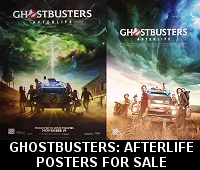

(Ghostbusters Amazon Store)

Please be aware that as an Amazon Associate, I earn a very tiny commission from purchases made though the Amazon links on this site.


|
COMMUNITY LINKS
NEWS • Ghostbusters Wiki • GB News • GB Fans • Ghostbusters Mania • GB Reboot Facebook • Proton Charging News Archive FORUMS • GB Fans • EctoZone OFFICIAL • Ghost Corps Facebook • Ghostbusters Facebook • Ghostbusters YouTube • Ghostbusters.com |

( MY COMPARISON REVIEW )
( AVOID SHIPPINGEASY/STAMPS.COM )
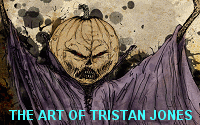
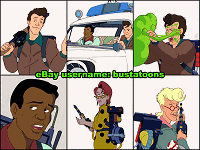
U.S. eBay (Ghostbusters stuff)
U.K. eBay (Ghostbusters stuff)
